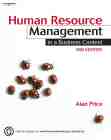Bestselling Books
|
Bestselling Books |
|
| US Bestsellers UK Bestsellers France - Meilleurs Ventes Canada Bestsellers Germany Bestsellers |
 Hooked on books? BestBooks.biz features book-related articles, book extracts and book selections from the best books - past and present.  Leading High Impact Teams: The Coach Approach to Peak Performanceby Cynder Niemela, Rachael LewisIn today's work world, a leader capable of galvanizing a team to produce superlative results is invaluable. This book shows new team leaders the way to avoid costly trial-and-error mistakes. It inspires seasoned team leaders to leverage the "Coach Approach" to make their team experiences lighter, more synergistic and infinitely more productive. Full of practical, step-by-step activities, real life stories and anecdotes to quickly apply, you'll learn what it takes to lead or coach a team to high impact. More information and prices from: Amazon.com - US dollars SeekBooks.com.au - Australian Dollars Amazon.ca - Canadian dollars Amazon.co.uk - British pounds Amazon.de - Euros Amazon.fr - Euros |
High-Performance Management Systems - Part 1Adapted from Human Resource Management in a Business Context, 3rd edition (2007) In all the debates about the meaning, significance and practice of HRM, nothing seems so certain than the link between HRM and performance. But is it? Karen Legge (2001), one of the most respected and astute commentators on human resource management says: "And what, might it be asked, are the present day concerns of HRM researchers, who (...) are of a modernist, positivist persuasion? In a word, their project is the search for the Holy Grail of establishing a causal relationship between HRM and performance. And in this search some success is claimed, in particular that the more the so-called 'high commitment/performance' HRM practices are adopted, the better the performance'(Legge, K. "Silver Bullet or Spent Round? Assessing the Meaning of the 'High Commitment Management/Performance Relationship" in Storey, J. (ed.) (2001), Human Resources Management: A Critical Text, 3e, Thomson Learning). She argues that in order to examine the relationship between performance and HRM we need to address three fundamental questions: 1. How are we to conceptualize HRM? 2. How are we to conceptualize performance? 3. How are we to conceptualize the relationship between the two? The theoretical meaning of HRM is addressed in Introduction to HRM on HR-Topics and see also HRM Models. Here we will look at HRM operationalized (according to Legge's approach) in terms of high commitment or high performance work practices. In practice, unpicking the meaning of 'high performance management' from from wider notions of management can be difficult. For example, the US Department of Labor (1998) defines high performance as: "A comprehensive customer-driven system that aligns all of the activities in an organization with the common focus of customer satisfaction through continuous improvement in the quality of goods and services." You will probably have recognized that the roots of this definition lie in Total Quality Management. In the past, the practice of TQM has often been procedural and bureaucratic but the high-performance approach has brought in elements of human relations or 'soft' HRM such as commitment and empowerment. The term was publicized by David Nadler within his 'Organizational Architecture' approach which focused on 'autonomous work teams' and 'high performance work systems'. Edward E. Lawler III used the term 'high performance involvement' as an alternative to empowerment, advocating the use of small teams of highly committed employees. The Institute of Work Psychology (2001) at the University of Sheffield states that High Performance Work Systems usually involve three main sets of management practices designed to enhance employee involvement, commitment and competencies. They describe these as: 1. Changing the design and conduct of jobs through flexible working (especially functional flexibility - broadening the pool of 'who does what' through training), team work, quality circles, suggestion schemes. 2. Ensuring that employees are given the knowledge and competences to handle high performance work through team work training, team briefings, inter-personal skills, appraisal, information-sharing. 3. Resourcing and development practices designed to attract and keep the right people with the right motivation. These include some guarantee of job security, an emphasis on internal selection, sophisticated selection techniques, and employee attitude surveys with feedback to the workers involved. Here there are further indications of an integration of 1970s and 1980s management techniques together with a certain amount of repackaging for the 21st Century. This article is based on Human Resource Management in a Business Context by Alan Price (3rd edition, 2007) . |
 in a Business Context by Alan Price
|
|
|
|
|
|
|
|
|
| Copyright © 2000-20l7 Alan Price and BestBooks.biz contributors. All rights reserved. |